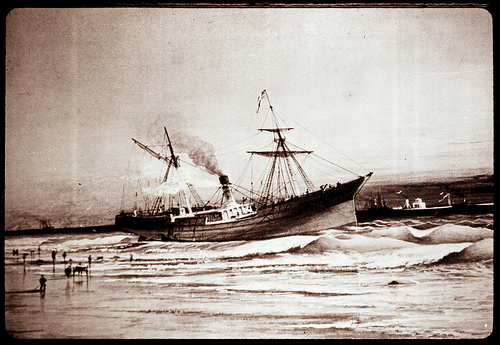Civil War
See also: Bentonville, Battle of; Blockade-Running; Fort Fisher, Battle of; Ironclads; Military Installations, Civil War; Peace Movement (Civil War); Secession Movement; Sherman's March; Union Volunteer Regiments; Civil War; Civil War to 1900; Civil War Battles; Amputations in the Civil War
Part i: Introduction; Part ii: Secession and First North Carolina Enlistments and Casualties; Part iii: Political and Social Turmoil during the War; Part iv: Unionism and Violence in the Western Counties; Part v: Military Movements, Battles, and Outcomes in the State; Part vi: References
Part III: Political and Social Turmoil during the War
Wartime relations between Governor Zebulon B. Vance and the central Confederate government in Richmond under President Jefferson Davis were often strained. Vance, along with many North Carolinians, believed that the state was overlooked and unappreciated by the Confederacy. At times Vance publicly defied the Richmond government as he struggled to make North Carolina self-sufficient. Independent North Carolinians were offended by the Conscription Act, and Vance exempted scores of men considered essential for state operations. Increasing taxes also created resentment in a people tired of war. Further, Vance and Davis often clashed over Davis's periodic suspension of the writ of habeas corpus.
Much of the European military supplies delivered by blockade-runners came through Wilmington, and the Wilmington & Weldon Railroad was nicknamed the "lifeline of the Confederacy" because of the vital supplies transported to the Army of Northern Virginia during the final year of the war. All textile production in North Carolina went to the manufacture of military uniforms. Since most soldiers were farmers who owned no slaves, the wives and children they left at home faced enormous hardships and responsibilities. The exemption of slaveholders owning 20 or more slaves from military duty also created a class division between nonslaveholders and those who owned slaves. In addition, shortages caused by the blockade coupled with inflation created misery at home and in the army. With no established welfare system, the families of many soldiers literally faced starvation, and women often begged Governor Vance to release husbands and sons from military service. Families also faced the impressment of food supplies and farm animals by Confederate agents. And for the first time, many North Carolina women sought work outside the home in an attempt to support their families.
Keep reading > Part IV: Unionism and Violence in the Western Counties ![]()
Image Credit:
Image from Blockade Runner Museum at Carolina Beach, NC. Photo courtesy of the North Carolina State Archives, call #N_73_12_30. Available from https://www.flickr.com/photos/north-carolina-state-archives/6967506881/ (accessed May 14, 2012).
1 January 2006 | Belton, Tom
